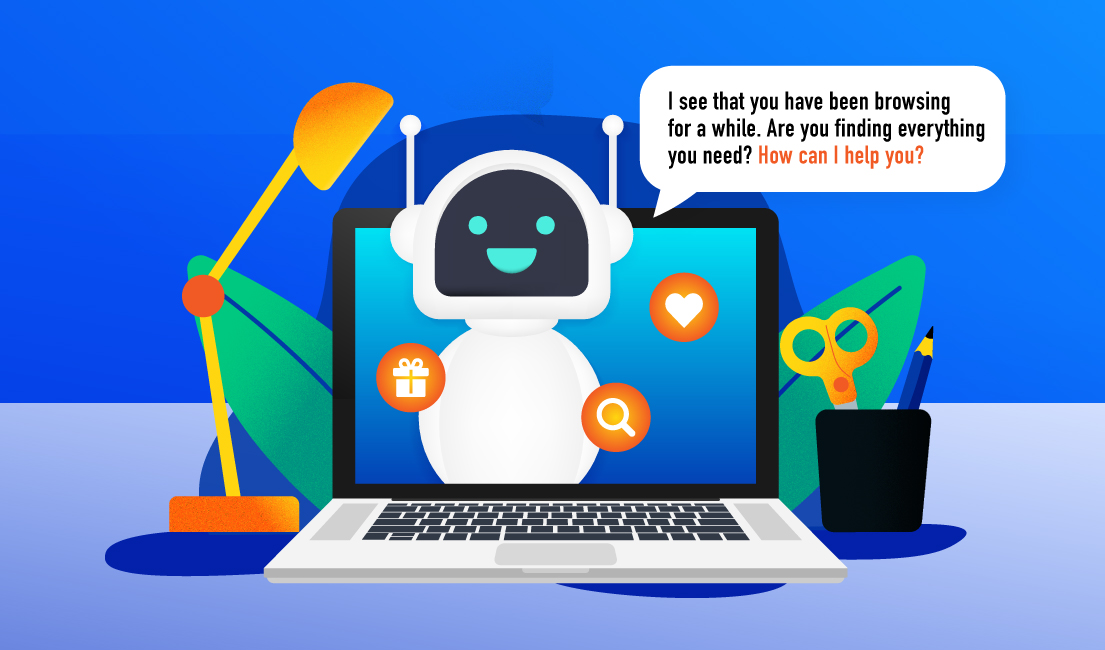7 min read
Customer retention is one of the most important aspects of any successful business, and recent events have only amplified its significance. While many countries may have entered the post-pandemic period, some consumer behaviors that shifted during the pandemic are here to stay, including online shopping. COVID-19 also accelerated digital transformation, meaning more bricks-and-mortar stores are moving to online.
This presents a huge opportunity for e-commerce businesses. However, a larger market means more entrants, resulting in more choice for consumers, and fiercer competition from rival businesses. That makes retaining your existing customers more important than ever, in order to maximize their lifetime value (LTV). After all, retained customers buy more often from a company and spend more than newer customers.
However, customers’ trust in companies is eroding these days. According to HubSpot , 55 percent of customers no longer trust the companies they buy from as much as they used to, while 81 per cent trust advice from friends and family over that from a company.
So, you will have to work harder than ever to keep your existing customers, and here are seven methods to help you achieve that.
1. Develop a Complete Customer View
Also known as a single customer view (SCV), this consolidates customer data from your different marketing and customer service channels, providing a comprehensive view of your customer. It will help you create better targeted and personalized messages that boost interest, engagement and conversion.
You can link your audience across devices and channels through an AI-based data science platform . How? By crunching a huge amount of user behavior data to detect patterns and link back to individual customers and the device they use. This will give you a consolidated view of each customer’s activity and interactions so you can engage with them seamlessly across channels.
2. Take an Omnichannel Approach
An omnichannel approach involves engaging customers through two or more online and offline channels simultaneously. Unlike multichannel marketing , omnichannel retail sees all your channels working in harmony with each other to create a truly customer-centric approach. For the customer, the shopping experience is seamless and consistent, regardless of where they are, what device they are using, and what channel they are accessing content from.
This meets a real customer need. Today’s consumers not only demand the best products and services, but they also want to access your brand at the times and in the places that suit them. They increasingly expect consistent and personalized information to be at their fingertips, on channels they engage with.
The focus of this approach is not on prioritizing one channel over another, but rather on seamlessly integrating each channel to create a coherent customer shopping experience. For example, you could enable customers to add an item to their shopping basket in your app, and then complete the checkout process later on your mobile or desktop site. Make it easy for the customers to buy, and they will reward you by coming back for more. _________________________________________________________________________________________
For more on this, read our white paper: How Martech Helps Brands Achieve a True Omnichannel Experience
3. Maximize Engagement With Content Marketing
Retaining customers is not just about squeezing sales out of them. In fact, the hard sell can often turn customers off. Instead, offer them value in the form of knowledge, advice or entertainment. This will build trust in your brand and inspire customer loyalty, making you their first port of call even when they are not looking to spend money.
Leveraging the complete customer view mentioned above, you will know your customers intimately, and have an in-depth knowledge of their interests (for example that they are interested in trail running, and not just running). This will help you tailor all kinds of value-laden content for them – maybe a round-up of the best trail running routes in their local area, or how to take care of the new trail running shoes they just bought from you.
Make sure your content marketing speaks your customers’ language as well. They will be much more likely to stay with a business that understands and responds to their wants and needs.
4. Offer Hyper-Personalization
Your first-party data can shed light on how your customers interact with your brand’s owned channels, but when it comes to personalizing your marketing, that is only one part of the puzzle. Combine your own data with third-party data to gain insights on customer behavior outside your channels. With the help of automated machine learning, you can also discover their interests and preferences, which you can use to offer hyper-personalized recommendations tailored to their needs and wants.
Say one of your customers buys women’s clothes from your website, but gets baby products from another site. With extra data and the right AI tools, you could identify that behavior and maybe what drives them there – they only shop there when certain promotions are running, for example. You could then micro-segment users at a granular level and deliver personalized and relevant recommendations to them across devices. Maybe you could offer a very similar promotion to the product they are searching for, for example.
By reaching out to the right customer with the right product and on the right channel, you will make the shopping experience effortless for the consumer, greatly increasing the likelihood of conversion.
5. Leverage Customer Reviews
Asking customers to leave a review after purchasing can do your brand a world of good. A string of positive reviews will show potential customers that your products or services are trustworthy with satisfied customers. Even the negatives can be turned into a positive – leaving a prompt response offering to rectify any outstanding issues will show that you care about the customer feedback and go the extra mile to provide the best customer experience possible.
A staggering 97 percent of shoppers read reviews left by other buyers when deciding whether to make a purchase. And nothing looks more worrying than a lack of reviews.
6. Fully Utilize Social Media
Used correctly, social media can provide your brand with amazing opportunities.
Sharing content will make your brand appear in your customers’ social feeds, giving you organic reach. Offering a deal on popcorns? Maybe you want to highlight a great movie or sports game in today’s TV schedule that would be the perfect accompaniment to some nice crunchy popcorn.
Social ads can enable you to target an incredibly specific demographic. With a treasure trove of customer data at your disposal from your complete customer view, you should know exactly who your customers are. Social ads are a quick and effective way to reach them.
Do not overlook social media as a retail channel. Many people – especially younger consumers – love the native experience of buying a product without leaving their social media apps. Add this functionality and you will increase the loyalty of these customers. Or they will just go to another brand that does offer it.
Lastly, reply to customer feedback through social channels, especially the negatives. There is nothing worse than getting owned in front of all your audiences.
7. Reward Loyalty
Be creative in how you reward your customers’ loyalty, and always keep them at the center of the experience. Once you have identified your most valuable customers using AI , you can offer rewards beyond mere discounts – outdoor apparel brand The North Face’s VIPeak program offers lifestyle-oriented rewards like a mountain-climbing trip to Nepal, for instance. Offering reward points in exchange for brand-featuring social content like selfies and unboxing videos will make your customers work for you, while reducing the cost of your product for long-term customers (a cheaper price per exercise class for those with annual memberships, say) will keep them coming back for more.
Customer retention is essential for businesses that want to thrive post-pandemic. These techniques will help you identify, reach and cultivate your audience so you can build a relationship that lasts for years.
* Are you looking to improve customer engagement and increase your customer retention rate? Find out more about how AI-enabled tools can help! Have a question? Get in touch with our team today for an exclusive consultation.



